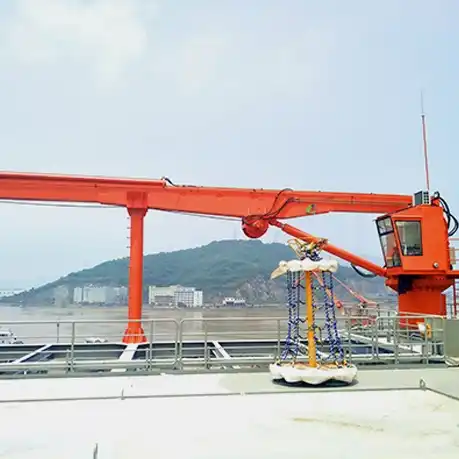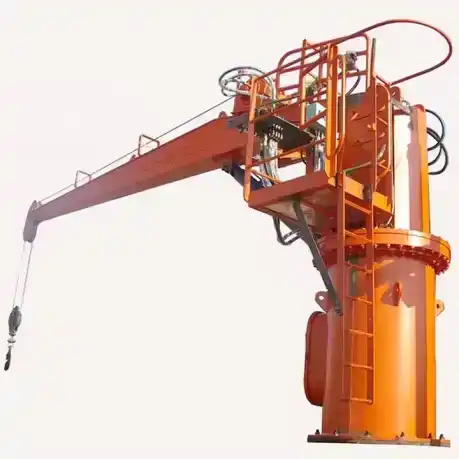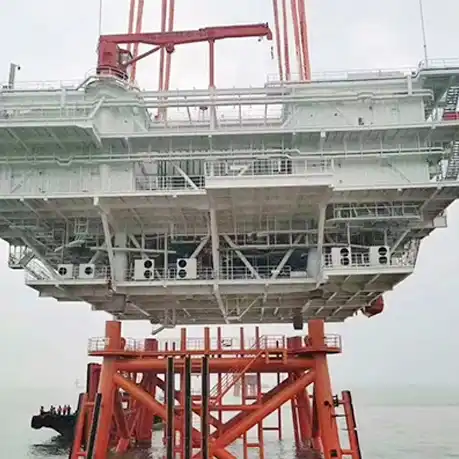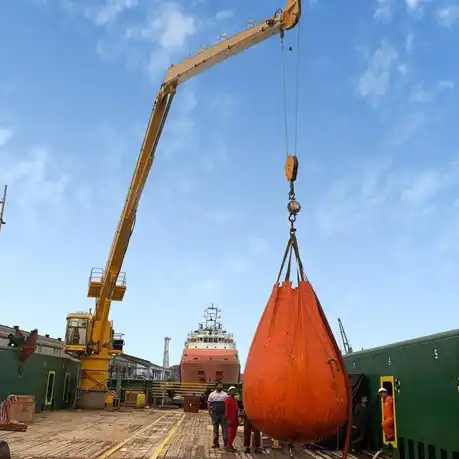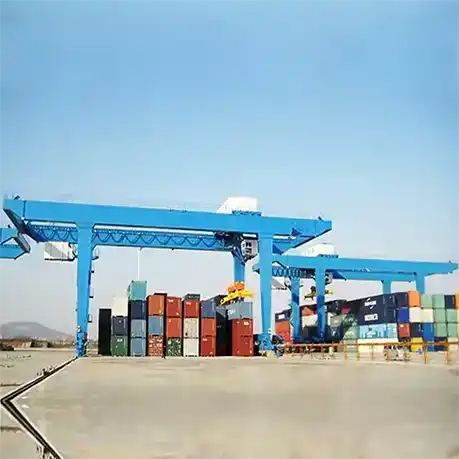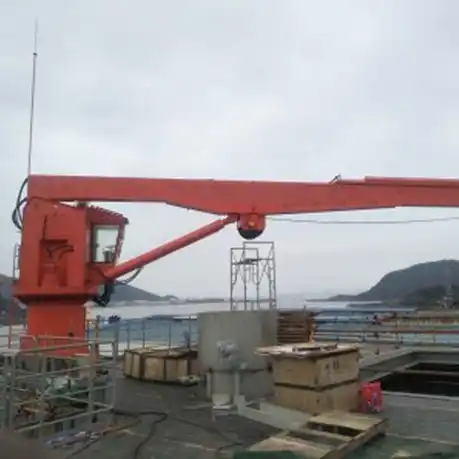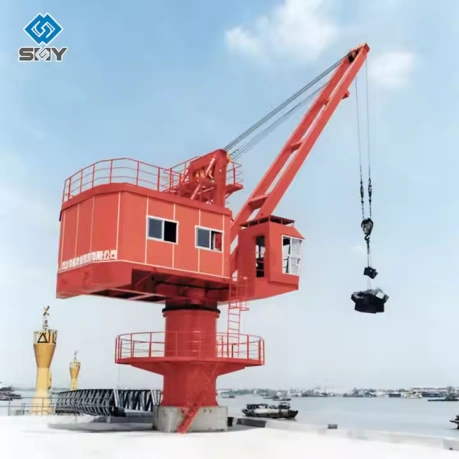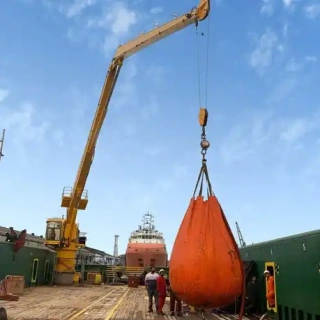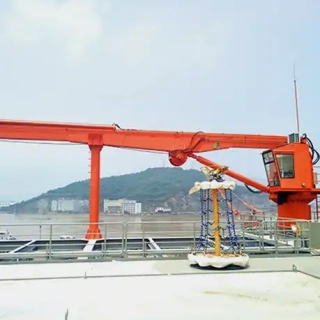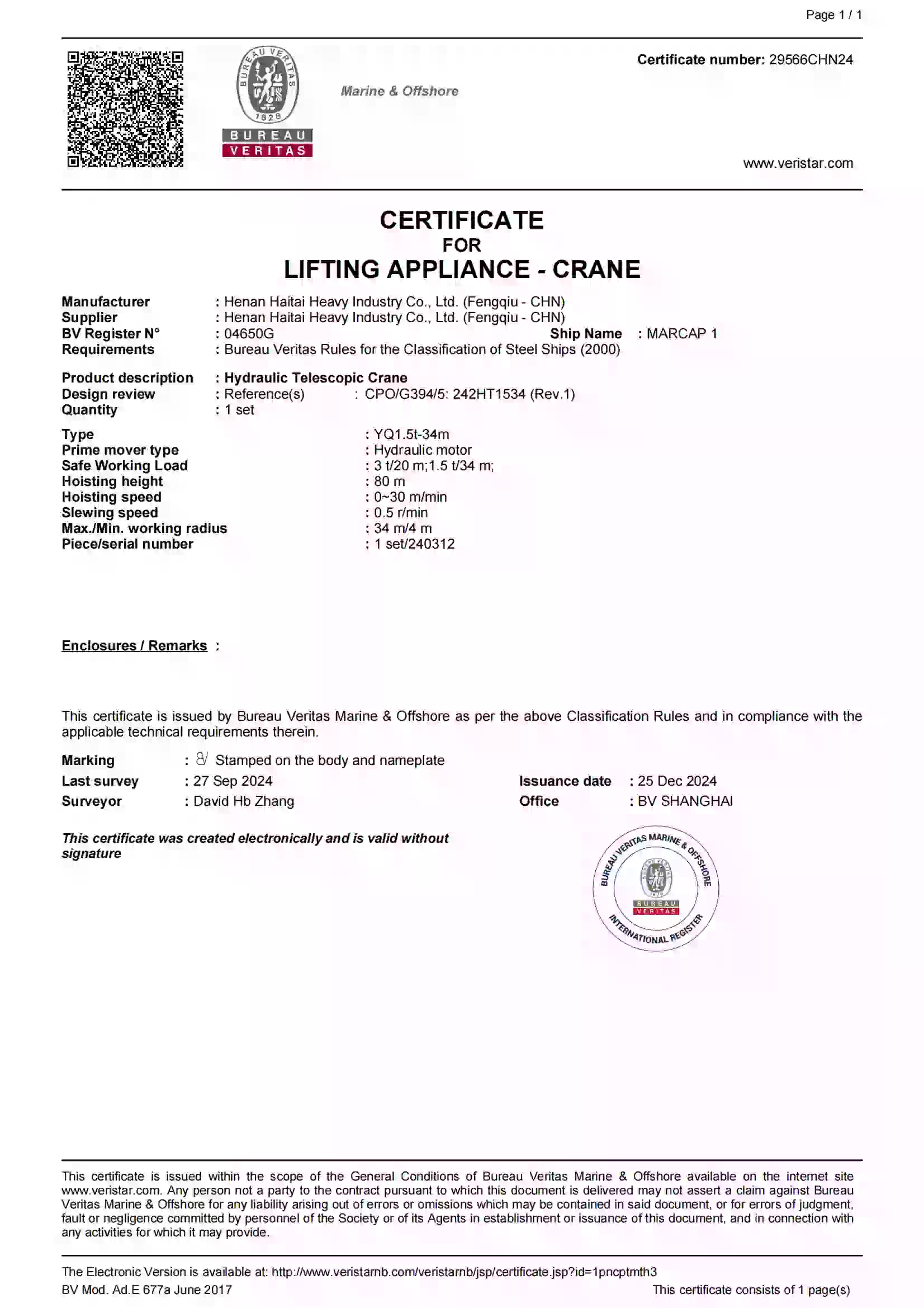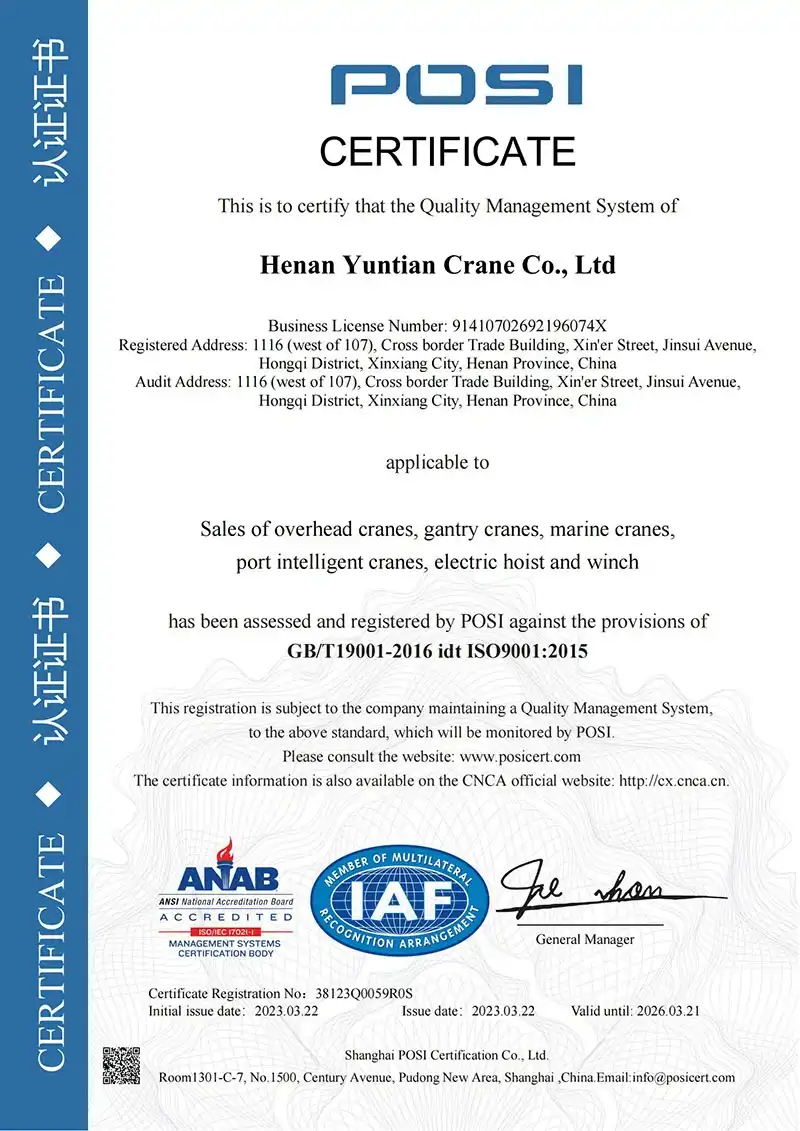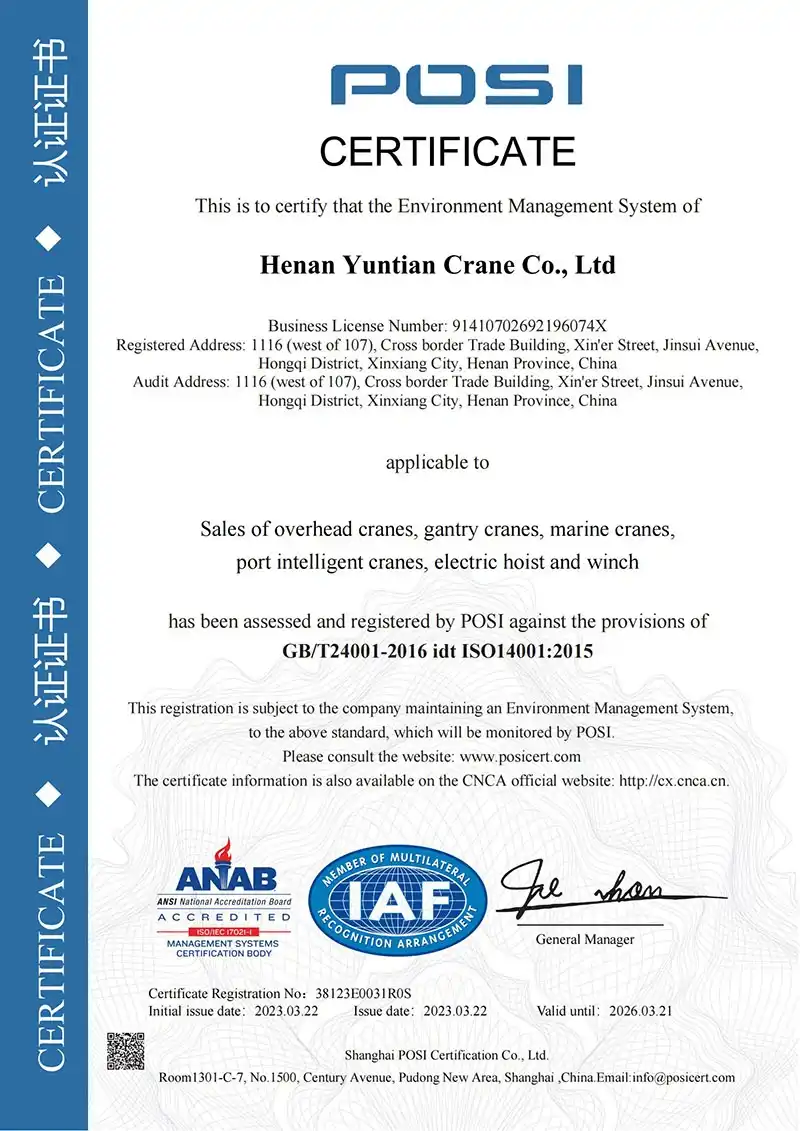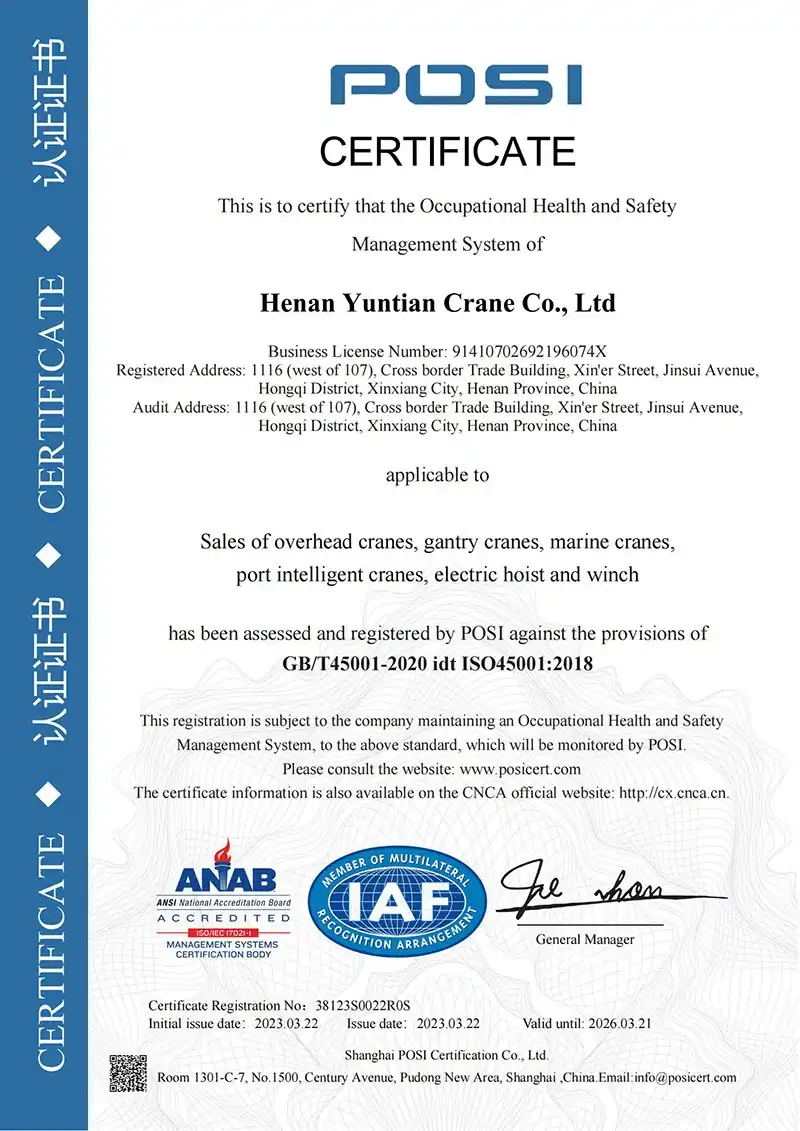





Why Choose YUNTIAN Marine Offshore Cranes?
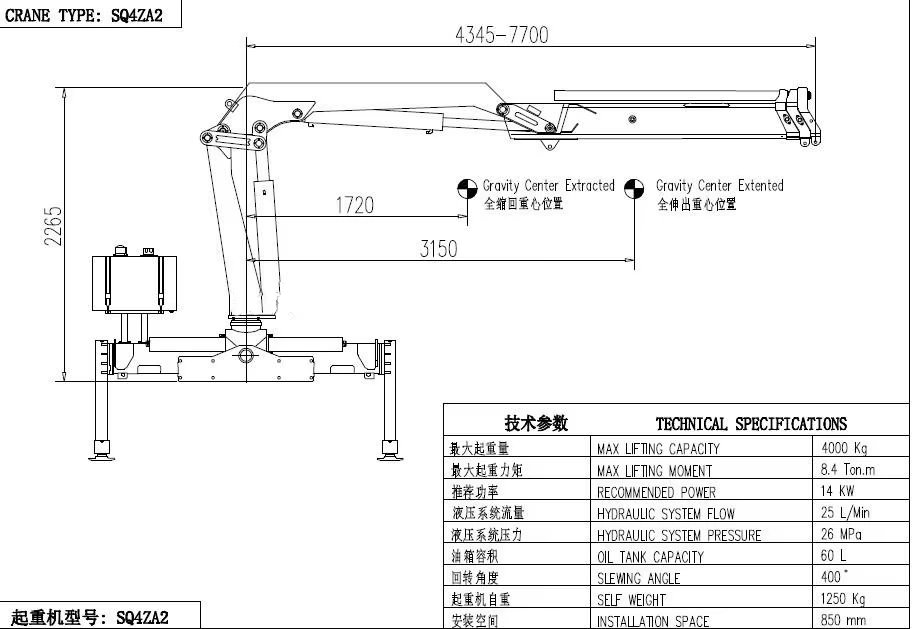

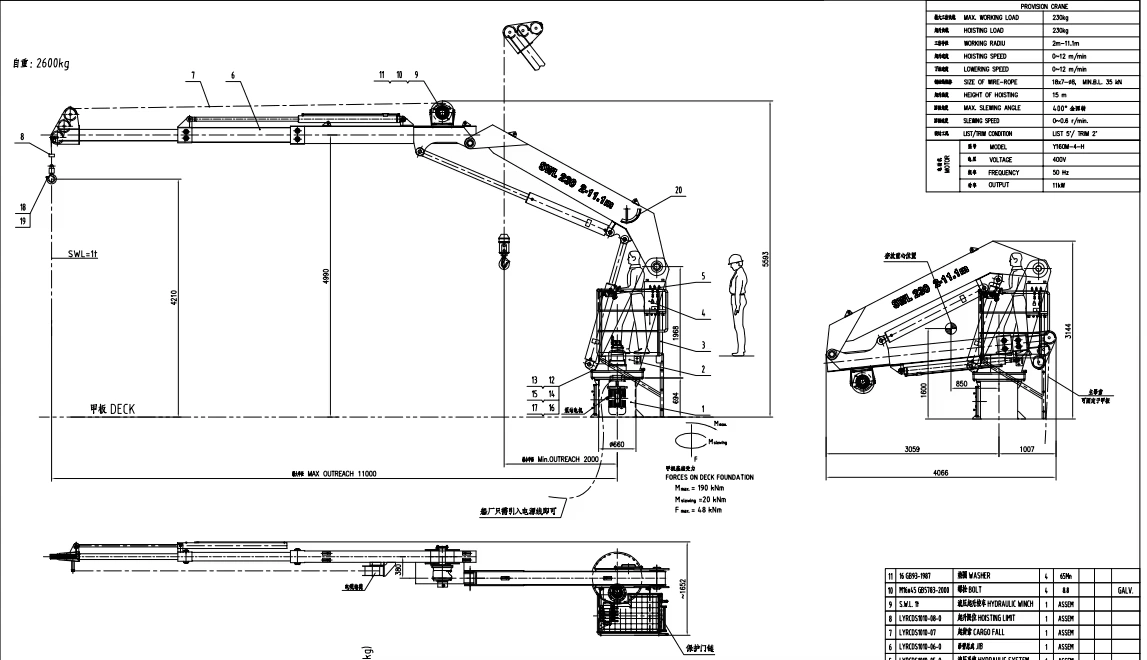
Innovative Engineering & Proven Expertise
YUNTIAN Cranes is a leading manufacturer of offshore cranes. We provide advanced technology and reliable equipment for marine operations. Our cranes perform well even in the toughest offshore conditions.
Key Advantages
✅ Flexible Power Options
Can use Hydraulic Power Units (HPU) or Electric Winches
Modular design: HPU and winch can be mounted on the crane or below deck
✅ Smart Control System
All functions—such as tension modes and winch operations—are built into one easy-to-use control system developed in-house
✅ Made for Harsh Sea Environments
Resists corrosion in saltwater
Stable in strong wind
Certified for ship-to-ship transfers and lifting people (optional)
✅ High Performance & Flexibility
Lifting capacity: 1–40 tons (SWL)
Reach: 10–40 meters
Boom types: Fixed, Knuckle-Jib, or Telescopic
Optional explosion-proof design for dangerous areas
✅ Designed for Operator Comfort
Large air-conditioned cabin with user-friendly controls
Advanced Load Moment Indicator (LMI) for safety
Optional hydraulic air cooler to maintain performance
Main Features of YUNTIAN Offshore Cranes
Strong and Long-Lasting
Made with high-strength, anti-corrosion steel for a longer life in offshore, oil, and gas operations.Accurate Operation
Smooth hydraulic movement allows precise handling of loads, even in rough seas.Used in Many Fields
Oil & Gas: Loading and unloading on rigs, FPSOs, and supply ships.
Shipyards: Lifting heavy items like engines and hull parts.
Wind Energy: Helping with turbine upkeep and part installation.
Ports & Emergency Use: Supports cargo work and rescue operations.Meets Safety Standards
Follows international rules including DNV-GL, ABS, and LR.
Marine cranes, also known as ship cranes or deck cranes, are mainly installed on vessels to load and unload cargo. They are key equipment for production operations on ships. These cranes are compact, good-looking, safe, energy-saving, and easy to operate. Their boom types include straight, telescopic, and folding arms. They can be powered and controlled by manual, electric, or electro-hydraulic systems.
A marine crane is a special type of crane used in offshore conditions. It is mainly used for moving goods between ships, sea supply, and handling underwater equipment. The sea environment makes crane control very challenging. On one hand, like land cranes, it must control load swing to ensure accurate and efficient movement. On the other hand, because the crane is fixed on a moving ship, the motion of the ship affects the load. Often, the motion where the load is lifted or placed is different from the crane’s motion.
Specifically, during operation, both the crane ship and the receiver ship roll, pitch, and heave with the waves. This causes the load to swing. Especially during lifting or lowering, ship movement may make the load hit the deck again or become loose before unhooking. These can be safety risks. This is especially serious when moving items like ammunition between ships.
The control of marine cranes is important to military and civilian projects worldwide. Studying how to control this complex system under special disturbances is also valuable for theory and practice.
Control of marine cranes mainly includes two parts: vertical control to reduce ship motion effect and horizontal control to reduce load swing. For vertical control, a common method is to connect the crane ship to the receiver ship with a mechanical system. This system senses the motion between the two ships and adjusts the rope length to match the heaving movement. This compensates for the motion between ships and helps move the load up and down safely. But this method needs special mechanical structures and has limits on load weight.
A marine crane includes a boom device, which consists of the boom, mast, ropes, and winch. Boom devices are traditional cargo equipment on ships. Although they use many ropes and are complicated to use, they are still common because they are simple to make and low cost.
There are two ways to use a boom device: single boom operation and double boom operation. In single boom operation, one boom is used to move goods. The boom lifts the load, and then ropes are pulled to swing the load outboard or to the hatch. Then the load is lowered, and the boom returns. This is repeated. This method is inefficient and labor-intensive. In double boom operation, two booms are used—one over the hatch, one outboard—both fixed in place with ropes. The hoist ropes of both booms connect to one hook. By winding and unwinding the ropes, goods are moved between the ship and the dock. This is more efficient and less tiring than single boom operation.
Later, improved boom devices were developed, such as the double-span rope boom device and the Ebel boom device. The double-span rope device is improved from single boom operation. It has a hoist rope and two sets of span ropes. The boom is controlled by one hoist winch and two span winches. It is easy to use and efficient. The Ebel boom device is improved from double boom operation. It includes a hoist winch, span winches, and slewing winches. Winches can quickly position the boom. It can also lift and place loads at specific points within reach, which improves efficiency. This was an important step toward fully automated cargo handling.
Marine cranes are used on bulk carriers, container ships, tankers, and multi-purpose vessels. Examples include cargo cranes on bulk carriers and container ships, hose cranes on tankers, and deck cranes on multi-purpose ships. Unlike land cranes, marine cranes are installed on unstable ships. During operation, the ship may tilt or swing. The working environment is tough, with sea wind and saltwater corrosion. When not in use, they also face weather, waves, rolling, heaving, and impact during voyages.
Marine cranes come in many structural types, such as slewing type, traveling type, rope luffing type, cylinder luffing type, telescopic boom, folding boom, A-frame type, and combined type. They can be powered by electricity, electro-hydraulics, electro-pneumatics, diesel/gasoline engines, or manual force. The most common type is the electro-hydraulic crane used on bulk carriers for cargo handling.
The main structure of a marine crane includes a base column, tower, and boom, which are made of welded steel plates. The base column is welded to the ship structure and supports the crane’s weight. The top of the base has a slewing ring. The tower supports the crane. It is connected to the slewing ring below and hinged to the boom. The top has pulleys and wire ropes. Inside the tower is the machinery room. The operator’s cabin is at the front. The boom is a truss structure that carries the load.
The mechanisms of a marine crane include the hoisting, luffing, and slewing systems. The hoisting system uses a motor and gearbox to rotate a drum that winds the wire rope, moving the hook up and down. The luffing system uses a motor and gearbox to rotate a drum that winds the rope to change the boom angle and adjust the reach. The slewing system uses a motor and gearbox to drive a pinion that engages with the slewing ring gear, rotating the tower and boom. All three systems have brakes to ensure safe operation. Together, these systems move the load to the desired position.
The electrical system includes control components in an electrical box that form the control system. Operators use buttons and handles in the cabin to control the crane. The hydraulic system includes pumps, motors, valves, pipes, and accessories to control and drive the mechanisms. Marine cranes also have access ways and ventilation devices as auxiliary equipment.
Boom devices can be divided into two types: light and heavy. Light-duty booms have a capacity under 10 tons; heavy-duty booms are over 10 tons. Capacity depends on the ship’s use. General cargo ships usually have light booms with single boom capacity of 3–5 tons and double boom capacity of 1.5–3 tons. A 10,000-ton cargo ship may have a single boom capacity up to 10 tons and double boom capacity up to 5 tons. Modern multi-purpose ships that handle containers need booms that can lift at least a 20-foot container (20 tons). Heavy booms are used for large machinery and heavy goods. Most general cargo ships have 1–2 heavy booms with capacity from 10 to 60 tons, sometimes up to 150 or even 300 tons. A standard cargo ship usually has two light booms per cargo hold. Very large cargo ships may have four light booms per hold.
Applications: Where YUNTIAN Cranes Deliver Excellence
🚢 Shipbuilding & Maintenance
Handles heavy ship parts with precision during building and repair.
⚓ Marine Cargo Operations
Loads and unloads containers, equipment, and supplies safely even in difficult conditions.
🌊 Subsea Operations
Deploys ROVs, sensors, and underwater tools for inspection and repair tasks.
🆘 Emergency & Salvage
Responds quickly to recover wrecks, contain spills, and support rescue.
Marine cranes are widely used in many types of offshore work. Here are their main uses:
Cargo Handling
Mounted on ship decks to load and unload bulk goods, containers, and heavy equipment. They are especially useful in areas without port facilities or in special conditions, such as on bulk carriers, container ships, and multi-purpose vessels.
Shipbuilding and Repair
Used in shipyards to lift large parts like hull sections, engines, and propulsion systems, improving construction efficiency. During repairs, they handle and replace items such as propellers and rudders.
Offshore Platform Operations
Used on oil and gas platforms and wind farms to install equipment, perform maintenance, and transport supplies. Examples include lifting wind turbine foundations, towers, and seabed survey devices.
Marine Rescue
Lifts lifeboats and rescue gear, and supports salvage operations and underwater rescue missions. They must perform well in complex sea conditions and harsh environments.
Military and Research Use
On warships, they install and maintain weapon systems and radar. On research vessels, they deploy and recover submersibles and scientific instruments.
Special Operations
Heavy-lift ships are equipped with large cranes that can lift 25 to 1000 tons or more. They are often used to transport big machinery and bridge parts.
Marine cranes must resist wind and waves, prevent corrosion, and be highly stable to suit the complex marine environment. Different types—such as deck cranes, floating cranes, and wind turbine installation cranes—vary in design and function. You can choose based on specific task needs.
Deck cranes are mounted on the upper deck of ships. They have a compact structure, which leaves more deck space available and minimizes obstruction to the bridge view. These cranes are easy to operate, efficient, and flexible. They require little preparation before work, making them increasingly popular.
Common types of deck cranes include fixed rotary cranes, mobile rotary cranes, and gantry cranes. They can be electric or electro-hydraulic.
Fixed Rotary Cranes
These are the most widely used. They can work alone or in pairs on port and starboard sides. Lifting capacity is usually 3–5 tons. On multi-purpose ships, a single crane must lift a 20-foot container (20 tons), and a twin crane must lift a 40-foot container (30 tons). Their capacity can reach 25–30 tons.
Mobile Rotary Cranes
These are used when loading and unloading require a large span, but a long boom is not desired. They can move sideways or lengthwise along the ship.
Gantry Cranes
These are widely used on full-container ships and barge carriers. They are usually four-legged or C-shaped. They have an extendable boom, a lifting beam, a movable bridge, and a cabin. The bridge’s main beam is higher than containers stacked on deck and has auto-positioning. When loading, it can place containers accurately in cells or stack them on deck. Barge carriers have more gantry cranes than container ships. Their capacity can reach hundreds of tons.
This flagship product is designed for offshore wind and heavy cargo transport. It has three main advantages:
01 Zero Emissions & High Efficiency
Uses all-electric drive instead of diesel. Lowers CO₂ emissions and noise. Improves energy use by over 30%.
02 Strong Lifting Capacity
Lifts up to 800 tons. Reaches 39 meters. Two cranes working together can lift 1600 tons. Suitable for huge parts like wind turbine blades and nacelles.
03 Compact & Smart Design
Saves deck space with optimized layout. Includes smart control for better precision and safety.


